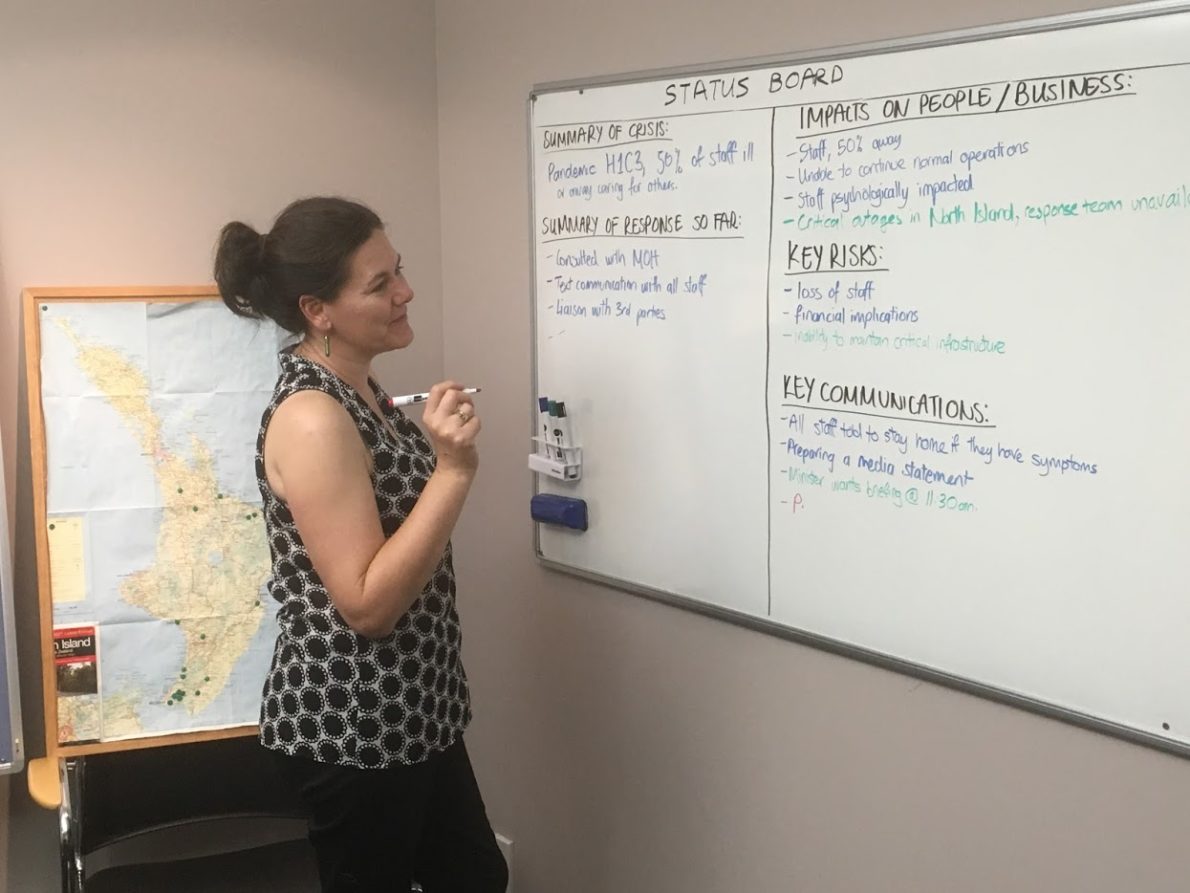The linchpin of the crisis management team (CMT) is the CMT support team. In our experience, the CMTs that do well in a crisis have a practiced and prepared support team helping them to manage information.
What the CMT support team does
This team works very closely with the CMT and it’s their job to capture and summarise crisis information as it comes to hand. This frees up the CMT to do their job.
Some of the challenges of managing information in a crisis are:
- an overload or lack of information – sometimes both at once
- dealing with multiple channels of information
- judging the credibility and accuracy of information
- getting the right information to the right people at the right time
- summarising and displaying information.
When crisis information is well documented and organised the CMT has a better understanding of the situation and the decisions that need to be made.
Who should be in the CMT support team?
Often this team is staffed with administration staff which works well if they have a broad knowledge of your business and are senior enough to challenge the thinking of the CMT. Otherwise identify others from your organisation who are good at processing information, prioritising and summarising. The team should be headed by someone in a risk management or a senior management role and should consist of at least three people – with back-ups at the ready.
Members of the CMT support team need to decide:
- what information is important
- what information should go in a summary and what is minutiae
- when information needs clarification
- when to question the CMT
- when to draw the CMT’s attention to something
They need the wherewithal to interrupt the meeting when it’s really important. Getting the CMT to stop and check information can make the difference between a poor response and a good one.
The CMT support team leader should be able to chair the meeting in the absence of the crisis manager.
Tools and resources
The importance of visual displays in the crisis management room can’t be overstated. Your CMT support team should consider setting up:
- Whiteboards
- Butcher’s paper
- Large A3 sticky pages
- Screen for projecting or casting
- Laptop(s)
- A crisis management app such as Talon
CMT support teams should practice regularly (with or without the whole CMT) – at least every six months and use these practices to ensure that the crisis response box has everything necessary.
It pays to pre-determine the roles within the CMT support team and what each person will do. In a fast-moving crisis, it’s too late to try and figure out who’s doing what.
Exercises
As part of our Wingspan exercise training, we also provide training for CMT support teams on:
- using visuals in the crisis room
- summarising information and producing status reports
- keeping a crisis event log
- suggested roles and responsibilities
- using the Talon app in a crisis.

